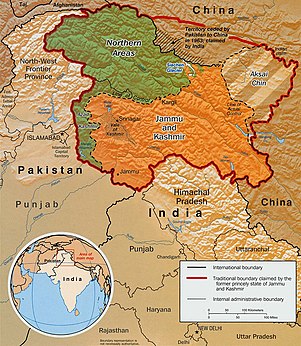This article needs additional citations for verification .(November 2015) |
| Saltoro Valley | |
|---|---|
| Geography | |
| Location | Baltistan, Pakistan |
| Rivers | Saltoro River |



Saltoro valley is the highest valley in Pakistan and is located within the region of Baltistan. [1] This valley is under the administration of Pakistan and is situated near the Saltoro Mountain Range which includes the prominent Saltoro Kangri peak and the Saltoro River. Saltoro Valley is in proximity to the Siachen Glacier, which is the world's highest battleground and a disputed territory between India and Pakistan. [2] [3]
The Actual Ground Position Line (AGPL) divides the region held by India and Pakistan in the disputed Siachen area, running through the Saltoro Mountain Range. In this area, higher peaks and passes are held by India, while Pakistan occupies the lower peaks and valleys. [4] In 1984, India conducted Operation Meghdoot, capturing most of the contested Siachen area.
In April 1986, Pakistan launched an assault in the region and gained control of a high point south of Bilafond La, establishing a military post on this peak, which they named "Quaid Post" in honor of their leader,Quaid-e-Azam Muhammad Ali Jinnah. [2] [3] However, between June 23 and June 26, 1987, India initiated a counter-operation named Operation Rajiv, recapturing the post from Pakistan. They renamed it Bana Top, in tribute to Bana Singh, who had been awarded India's highest gallantry award, the Param Vir Chakra. [5] [3] [2]